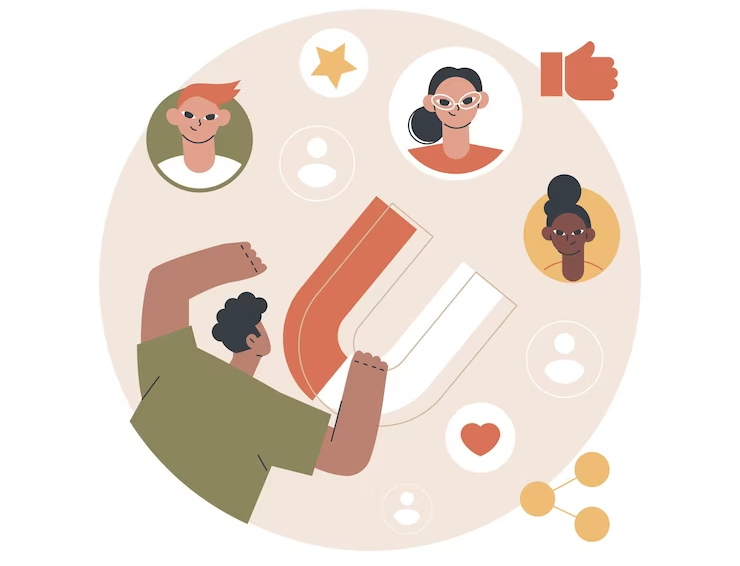When you start working in affiliate marketing, the key goal is to attract a lot of traffic. Yes, effective advertising campaigns are great. There you have the desirable targeted action and it seems you can exhale. But what’s next?
At the start of your path of interaction with the target audience, the cycle of interaction with each user individually automatically begins. In parallel, a customer lifetime value counter is triggered. So now your main task is to make sure that the cost of attracting a customer does not exceed the revenue from the entire interaction with him or her, otherwise, you will simply go bankrupt. In order to ensure that your story with the user is not a one-day thing and that the individual user brings in an impressive amount of money over the entire period of cooperation, you need to work on customer retention. Harvard Business School researchers say that improving CRR by 5% increases profits from 25 to 95%, depending on the type of business.
What is this metric, how to calculate it, and how does it show up in different affiliate marketing verticals? We’re going to break it all down right now.
Customer retention basics
Retention in marketing is a set of measures to keep users on the advertiser’s resource. Depending on the vertical and the offerer, retention tools can mean different types of interaction with the user: from SMS and push notifications to unique mechanics within services.
Customer retention rate (CRR) or simply retention rate (RR) is a way to mathematically measure the success of customer retention measures. It reflects the percentage of active users remaining at the end of the time period relative to the same indicator at the beginning of the period. This metric is used in those offers that involve long-term interaction with the user.
How to calculate CRR?
To calculate the retention rate you need only three values: the number of users at the beginning of the period, the number of users at the end of the period, and the number of new users for the whole period. The ratio can vary from 0% to 100%.
The formula looks like this:
CRR = ((users at end of period — new) / users at beginning of period)) x 100
What is the ideal CRR?
To understand what CRR will suit you, you can either conduct a comparative statistical analysis within your own company over a period of time and try to increase it from period to period. Or compare the coefficient with competitors in the niche. It would be a mistake to focus on the CRR of a business, whose sphere of activity differs from yours.
If you want to reach new GEOs and audiences, maybe it is all waiting for you on Telegram? We’ve prepared some material about Telegram audiences. What are the messenger’s users like this year? How old they are, what they do, and what they are interested in!
Here are the average Retention Rates for the affiliate marketing sub-spheres:
- Mobile app developers have a 30-day retention rate of 42% and a 90-day retention rate of 25%
- For media, the eight-week retention rate is 25%
- In SaaS and e-commerce, a CRR above 35% is considered good.
Why is CRR really important?
For the advertiser, CRR is a measure of how effectively customer retention techniques interact with users. This refers to the performance of retention tools, audience segmentation, and the relevance of bonuses and promotions.
Attracting new customers always costs more than retaining old ones. From this thesis comes one of the advertiser’s tasks — to try not to lose users and motivate them to make repeated purchases and targeted actions. The importance of quality retention is especially obvious when you think about the fact that advertisers predominantly pay for traffic using the CPA model.
Yes, there are KPIs and holds as a means of protecting against bad traffic. However, even if a lead has been approved, that doesn’t mean he will continue to use the resource. Holds help extend the user’s interaction with the product, thereby increasing the advertiser’s revenue.
Customer retention in affiliate marketing
Retention methods and tools vary from vertical to vertical because of niche specifics. The only exception is push notifications — they are present in all the verticals where apps are concerned. They inform users about some in-game events, new promotions, and bonuses. Let’s take a look at customer retention mechanisms in the biggest verticals:
Gambling
This vertical hangs on users who play regularly and leave a tidy sum in the games. That’s why it’s crucial to hit players by any means. One deposit made, no matter the sum, means nothing in the long run. The Retention Department in gambling has many tools for retention: sign-up bonuses, reload promotions, in-service loyalty programs, events, contests, mini-games, etc.
Dating
In dating, the product format itself works for retention: text and video chats. Direct communication involves the user and encourages him to come again. In addition, there are tools within services: bonus actions, discounts on premium accounts and other paid functionality, message boards with the best profiles, and temporary boosts.
Betting
Retention in betting is tied to high-profile sports and cyber-sports world events, insurance that encourages safe betting, and free bets — bets of non-existent money that are given to players as a bonus. Many bookmakers also hold holiday events, prize draws, and match tickets.
Finance
To keep users on the exchange, experts use a number of the following tools: educational events and guides, the opportunity to read and blog, and cashback on the purchase of lots and raffles. In addition, various bonuses are created for regular clients who make the most transactions.
Customer retention: fitness case
Promotion through human weaknesses is an important part of affiliate marketing. One of the most vulnerable aspects of human nature is sport. Willpower plays a huge role in taking care of our health and our bodies, and it often fails us. For the overweight person, it can be a big problem and a pain point, but for the affiliate, it is a great way to make money. Fitness products, exercise classes, and training courses in terms of verticals are at the intersection of nutra and info products. Let’s take a look at the psychology of fitness sales to improve advertising campaigns and increase CRR in this area.
How to keep clients from quitting?
The biggest problem with the promotion of fitness offers is their disposability. The mechanics are simple: a person buys an online training course or a gym membership, goes to a few classes, and then loses motivation and quits the initiative. Here are the key reasons for this consumer pattern and tips on how to turn them into profitability:
1. Fuzzy motives
Motivation must have energy and direction toward some action. Self-determination theory says that if a person wants to remain motivated, he must make decisions on their own, not under pressure. In other words, they must be autonomous.
At this point, you may think that advertising makes no sense. But that’s not entirely true, try to look at it from a different angle: if it doesn’t work to impose motivation, encourage users to identify their own motives for change. Talk about the different benefits of exercising. But be specific to snag attention: reducing the need for medication, getting into skinny jeans from college, or having more energy to go out with friends or do their job. Push the pain points to make your product a lifesaver.
2. Lack of confidence
It’s about exercising competence. In other words, it is the need for people to believe that they can influence the outcome of their actions. In order to increase it, regularity is important — small steps toward a goal. On the other hand, a lack of confidence in one’s competence can destroy motivation. For instance, If the person is trying to do a difficult workout as a beginner, participating in a new class without proper training, or stopping a class before there is enough practice to see signs of improvement.
To influence users with uncertainty about their competencies, it’s important to support them along the way. In your creatives, ask clients to recall their many successes in the past — this will give them confidence. Remind the audience that quick results aren’t possible, but they’re already winners because they started this journey and didn’t quit. Also, offer them a checklist of daily success-oriented goals, such as “eat vegetables at every meal” or “walk 15 minutes every day”.
3. The feeling of being an outsider
It starts from the basic psychological need for relatedness. The psychology of motivation demonstrates a direct correlation between self-motivation and a sense of belonging to a group. For motivation to arise, a person needs to believe that his or her actions will be approved by significant others.
In this case, two models will work perfectly. The first is mentoring. Become an authority for the audience and acknowledge their successes. That way you make them dependent on your opinion. The second is the community. Form an ecosystem of people around your brand who are tied to the same goal. When a person works side by side with like-minded people, a healthy rivalry comes into play.
Final thoughts
Among other important KPIs in affiliate marketing, the retention rate often falls by the wayside because affiliates don’t interact with the product beyond the target action. It’s in vain. If you master the art of user retention, you can push the boundaries of advertiser interaction and increase your profits. In this business, it’s important to pay attention to the nuances of retention across verticals. A particularly interesting case study of motivating customers to extend LTV can be seen in the fitness services and products industry. Use our tips for increasing CRR and reaching even greater heights!










